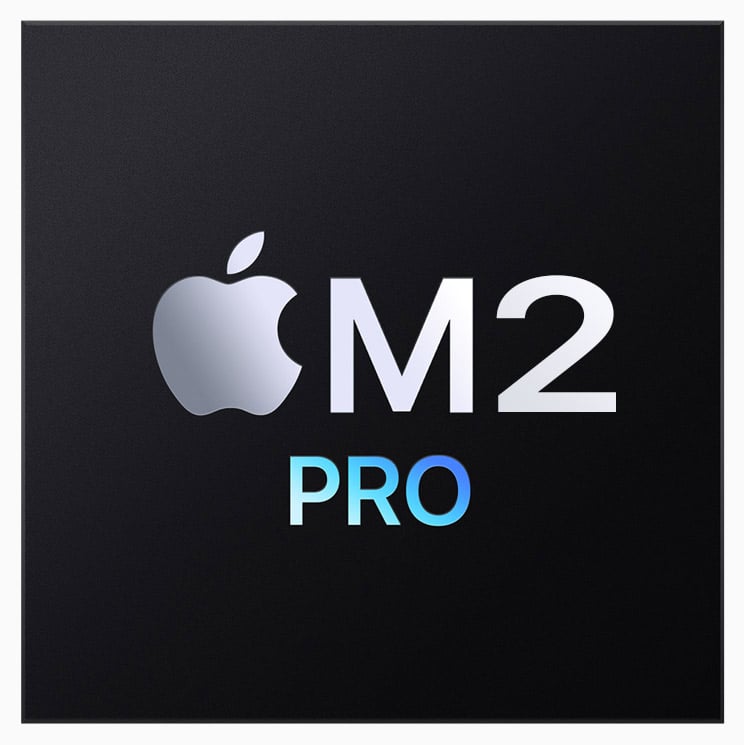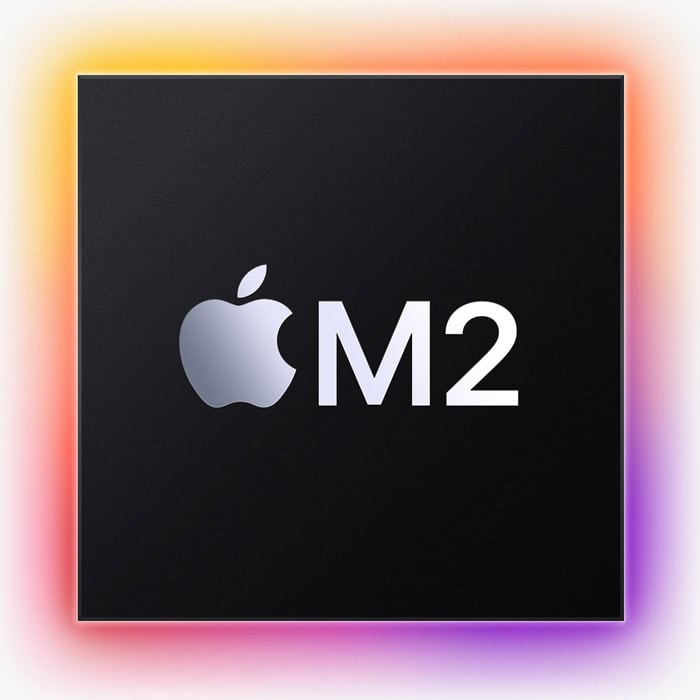
Apple M1 Pro (10-CPU 14-GPU) vs Apple A12X Bionic
Last updated:
CPU comparison with benchmarks

|
 |

|
| Apple M1 Pro (10-CPU 14-GPU) | Apple A12X Bionic | |
CPU comparisonApple M1 Pro (10-CPU 14-GPU) or Apple A12X Bionic - which processor is faster? In this comparison we look at the differences and analyze which of these two CPUs is better. We compare the technical data and benchmark results.
The Apple M1 Pro (10-CPU 14-GPU) has 10 cores with 10 threads and clocks with a maximum frequency of 3.20 GHz. Up to 32 GB of memory is supported in 2 memory channels. The Apple M1 Pro (10-CPU 14-GPU) was released in Q3/2021. The Apple A12X Bionic has 8 cores with 8 threads and clocks with a maximum frequency of 2.49 GHz. The CPU supports up to 6 GB of memory in 2 memory channels. The Apple A12X Bionic was released in Q3/2018. |
||
| Apple M series (23) | Family | Apple A series (22) |
| Apple M1 (9) | CPU group | Apple A12/A12X/A12Z (3) |
| 1 | Generation | 12 |
| M1 | Architecture | A12 |
| Mobile | Segment | Mobile |
| -- | Predecessor | Apple A10X Fusion |
| Apple M2 Pro (10-CPU 16-GPU) | Successor | -- |
|
|
||
CPU Cores and Base FrequencyThe Apple M1 Pro (10-CPU 14-GPU) has 10 CPU cores and can calculate 10 threads in parallel. The clock frequency of the Apple M1 Pro (10-CPU 14-GPU) is 0.60 GHz (3.20 GHz) while the Apple A12X Bionic has 8 CPU cores and 8 threads can calculate simultaneously. The clock frequency of the Apple A12X Bionic is at 2.49 GHz. |
||
| Apple M1 Pro (10-CPU 14-GPU) | Characteristic | Apple A12X Bionic |
| 10 | Cores | 8 |
| 10 | Threads | 8 |
| hybrid (big.LITTLE) | Core architecture | hybrid (big.LITTLE) |
| No | Hyperthreading | No |
| No | Overclocking ? | No |
| 0.60 GHz (3.20 GHz) 8x Firestorm |
A-Core | 2.49 GHz 4x Vortex |
| 0.60 GHz (2.06 GHz) 2x Icestorm |
B-Core | 1.59 GHz 4x Tempest |
Artificial Intelligence and Machine LearningProcessors with the support of artificial intelligence (AI) and machine learning (ML) can process many calculations, especially audio, image and video processing, much faster than classic processors. Algorithms for ML improve their performance the more data they have collected via software. ML tasks can be processed up to 10,000 times faster than with a classic processor. |
||
| Apple M1 Pro (10-CPU 14-GPU) | Characteristic | Apple A12X Bionic |
| Apple Neural Engine | AI hardware | Apple Neural Engine |
| 16 Neural cores @ 11 TOPS | AI specifications | 8 Neural cores @ 5 TOPS |
Internal GraphicsThe Apple M1 Pro (10-CPU 14-GPU) or Apple A12X Bionic has integrated graphics, called iGPU for short. The iGPU uses the system's main memory as graphics memory and sits on the processor's die. |
||
| Apple M1 Pro (14 Core) | GPU | Apple A12X |
| 0.39 GHz | GPU frequency | 1.13 GHz |
| 1.30 GHz | GPU (Turbo) | -- |
| 1 | GPU Generation | 9 |
| 5 nm | Technology | 7 nm |
| 3 | Max. displays | 1 |
| 224 | Compute units | 28 |
| 1792 | Shader | 448 |
| No | Hardware Raytracing | No |
| No | Frame Generation | No |
| 32 GB | Max. GPU Memory | 6 GB |
| -- | DirectX Version | -- |
Hardware codec supportA photo or video codec that is accelerated in hardware can greatly accelerate the working speed of a processor and extend the battery life of notebooks or smartphones when playing videos. |
||
| Apple M1 Pro (14 Core) | GPU | Apple A12X |
| Decode / Encode | Codec h265 / HEVC (8 bit) | Decode / Encode |
| Decode / Encode | Codec h265 / HEVC (10 bit) | Decode / Encode |
| Decode / Encode | Codec h264 | Decode / Encode |
| Decode / Encode | Codec VP9 | Decode / Encode |
| Decode | Codec VP8 | Decode / Encode |
| No | Codec AV1 | No |
| Decode | Codec AVC | Decode |
| Decode | Codec VC-1 | Decode |
| Decode / Encode | Codec JPEG | Decode / Encode |
Memory & PCIeThe Apple M1 Pro (10-CPU 14-GPU) can use up to 32 GB of memory in 2 memory channels. The maximum memory bandwidth is 102.4 GB/s. The Apple A12X Bionic supports up to 6 GB of memory in 2 memory channels and achieves a memory bandwidth of up to 68.2 GB/s. |
||
| Apple M1 Pro (10-CPU 14-GPU) | Characteristic | Apple A12X Bionic |
| LPDDR5-6400 | Memory | LPDDR4X-4266 |
| 32 GB | Max. Memory | 6 GB |
| 2 (Dual Channel) | Memory channels | 2 (Dual Channel) |
| 102.4 GB/s | Max. Bandwidth | 68.2 GB/s |
| No | ECC | No |
| 28.00 MB | L2 Cache | 8.00 MB |
| -- | L3 Cache | -- |
| 4.0 | PCIe version | -- |
| -- | PCIe lanes | -- |
| -- | PCIe Bandwidth | -- |
Thermal ManagementThe thermal design power (TDP for short) of the Apple M1 Pro (10-CPU 14-GPU) is 45 W, while the Apple A12X Bionic has a TDP of 15 W. The TDP specifies the necessary cooling solution that is required to cool the processor sufficiently. |
||
| Apple M1 Pro (10-CPU 14-GPU) | Characteristic | Apple A12X Bionic |
| 45 W | TDP (PL1 / PBP) | 15 W |
| -- | TDP (PL2) | -- |
| -- | TDP up | -- |
| -- | TDP down | -- |
| -- | Tjunction max. | -- |
Technical detailsThe Apple M1 Pro (10-CPU 14-GPU) is manufactured in 5 nm and has 28.00 MB cache. The Apple A12X Bionic is manufactured in 7 nm and has a 8.00 MB cache. |
||
| Apple M1 Pro (10-CPU 14-GPU) | Characteristic | Apple A12X Bionic |
| 5 nm | Technology | 7 nm |
| Chiplet | Chip design | Chiplet |
| Armv8.5-A (64 bit) | Instruction set (ISA) | Armv8-A (64 bit) |
| Rosetta 2 x86-Emulation | ISA extensions | -- |
| -- | Socket | -- |
| Apple Virtualization Framework | Virtualization | None |
| Yes | AES-NI | No |
| macOS | Operating systems | iOS |
| Q3/2021 | Release date | Q3/2018 |
| -- | Release price | -- |
| show more data | show more data | |
Rate these processors
Average performance in benchmarks
⌀ Single core performance in 3 CPU benchmarks
⌀ Multi core performance in 3 CPU benchmarks
Cinebench R23 (Single-Core)
Cinebench R23 is the successor of Cinebench R20 and is also based on the Cinema 4 Suite. Cinema 4 is a worldwide used software to create 3D forms. The single-core test only uses one CPU core, the amount of cores or hyperthreading ability doesn't count.
|
|
Apple M1 Pro (10-CPU 14-GPU)
10C 10T @ 3.20 GHz |
||
|
|
Apple A12X Bionic
8C 8T @ 2.49 GHz |
||
Cinebench R23 (Multi-Core)
Cinebench R23 is the successor of Cinebench R20 and is also based on the Cinema 4 Suite. Cinema 4 is a worldwide used software to create 3D forms. The multi-core test involves all CPU cores and taks a big advantage of hyperthreading.
|
|
Apple M1 Pro (10-CPU 14-GPU)
10C 10T @ 3.20 GHz |
||
|
|
Apple A12X Bionic
8C 8T @ 2.49 GHz |
||
Geekbench 5, 64bit (Single-Core)
Geekbench 5 is a cross plattform benchmark that heavily uses the systems memory. A fast memory will push the result a lot. The single-core test only uses one CPU core, the amount of cores or hyperthreading ability doesn't count.
|
|
Apple M1 Pro (10-CPU 14-GPU)
10C 10T @ 3.20 GHz |
||
|
|
Apple A12X Bionic
8C 8T @ 2.49 GHz |
||
Geekbench 5, 64bit (Multi-Core)
Geekbench 5 is a cross plattform benchmark that heavily uses the systems memory. A fast memory will push the result a lot. The multi-core test involves all CPU cores and taks a big advantage of hyperthreading.
|
|
Apple M1 Pro (10-CPU 14-GPU)
10C 10T @ 3.20 GHz |
||
|
|
Apple A12X Bionic
8C 8T @ 2.49 GHz |
||
Geekbench 6 (Single-Core)
Geekbench 6 is a benchmark for modern computers, notebooks and smartphones. What is new is an optimized utilization of newer CPU architectures, e.g. based on the big.LITTLE concept and combining CPU cores of different sizes. The single-core benchmark only evaluates the performance of the fastest CPU core, the number of CPU cores in a processor is irrelevant here.
|
|
Apple M1 Pro (10-CPU 14-GPU)
10C 10T @ 3.20 GHz |
||
|
|
Apple A12X Bionic
8C 8T @ 2.49 GHz |
||
Geekbench 6 (Multi-Core)
Geekbench 6 is a benchmark for modern computers, notebooks and smartphones. What is new is an optimized utilization of newer CPU architectures, e.g. based on the big.LITTLE concept and combining CPU cores of different sizes. The multi-core benchmark evaluates the performance of all of the processor's CPU cores. Virtual thread improvements such as AMD SMT or Intel's Hyper-Threading have a positive impact on the benchmark result.
|
|
Apple M1 Pro (10-CPU 14-GPU)
10C 10T @ 3.20 GHz |
||
|
|
Apple A12X Bionic
8C 8T @ 2.49 GHz |
||
iGPU - FP32 Performance (Single-precision GFLOPS)
The theoretical computing performance of the internal graphics unit of the processor with simple accuracy (32 bit) in GFLOPS. GFLOPS indicates how many billion floating point operations the iGPU can perform per second.
|
|
Apple M1 Pro (10-CPU 14-GPU)
Apple M1 Pro (14 Core) @ 1.30 GHz |
||
|
|
Apple A12X Bionic
Apple A12X @ 1.13 GHz |
||
Performance for Artificial Intelligence (AI) and Machine Learning (ML)
Processors with the support of artificial intelligence (AI) and machine learning (ML) can process many calculations, especially audio, image and video processing, much faster than classic processors. The performance is given in the number (trillions) of arithmetic operations per second (TOPS).
|
|
Apple M1 Pro (10-CPU 14-GPU)
10C 10T @ 0.60 GHz |
||
|
|
Apple A12X Bionic
8C 8T @ 2.49 GHz |
||
Cinebench 2024 (Single-Core)
The Cinebench 2024 benchmark is based on the Redshift rendering engine, which is also used in Maxon's 3D program Cinema 4D. The benchmark runs are each 10 minutes long to test whether the processor is limited by its heat generation.
|
|
Apple M1 Pro (10-CPU 14-GPU)
10C 10T @ 3.20 GHz |
||
|
|
Apple A12X Bionic
8C 8T @ 2.49 GHz |
||
Cinebench 2024 (Multi-Core)
The Multi-Core test of the Cinebench 2024 benchmark uses all cpu cores to render using the Redshift rendering engine, which is also used in Maxons Cinema 4D. The benchmark run is 10 minutes long to test whether the processor is limited by its heat generation.
|
|
Apple M1 Pro (10-CPU 14-GPU)
10C 10T @ 3.20 GHz |
||
|
|
Apple A12X Bionic
8C 8T @ 2.49 GHz |
||
AnTuTu 8 Benchmark
The AnTuTu 8 Benchmark measures the performance of a SoC. AnTuTu benchmarks the CPU, GPU, Memory as well as the UX (User Experience) by simulating browser and app usage. AnTuTu can benchmark any ARM CPU that runs under Android or iOS. Devices may not be directly compareable if the benchmark has been performed under different operating systems.
In the AnTuTu 8 benchmark, the single-core performance of a processor is only slightly weighted. The evaluation consists of the multi-core performance of the processor, the speed of the RAM and the performance of the internal graphics.
In the AnTuTu 8 benchmark, the single-core performance of a processor is only slightly weighted. The evaluation consists of the multi-core performance of the processor, the speed of the RAM and the performance of the internal graphics.
|
|
Apple M1 Pro (10-CPU 14-GPU)
10C 10T @ 0.60 GHz |
||
|
|
Apple A12X Bionic
8C 8T @ 2.49 GHz |
||
Blender 3.1 Benchmark
In the Blender Benchmark 3.1, the scenes "monster", "junkshop" and "classroom" are rendered and the time required by the system is measured. In our benchmark we test the CPU and not the graphics card. Blender 3.1 was presented as a standalone version in March 2022.
|
|
Apple M1 Pro (10-CPU 14-GPU)
10C 10T @ 3.20 GHz |
||
|
|
Apple A12X Bionic
8C 8T @ 2.49 GHz |
||
Estimated results for PassMark CPU Mark
Some of the CPUs listed below have been benchmarked by CPU-monkey. However the majority of CPUs have not been tested and the results have been estimated by a CPU-monkey’s secret proprietary formula. As such they do not accurately reflect the actual Passmark CPU mark values and are not endorsed by PassMark Software Pty Ltd.
|
|
Apple M1 Pro (10-CPU 14-GPU)
10C 10T @ 3.20 GHz |
||
|
|
Apple A12X Bionic
8C 8T @ 2.49 GHz |
||
CPU performance per watt (efficiency)
Efficiency of the processor under full load in the Cinebench R23 (multi-core) benchmark. The benchmark result is divided by the average energy required (CPU package power in watts). The higher the value, the more efficient the CPU is under full load.
|
|
Apple M1 Pro (10-CPU 14-GPU)
12,390 CB R23 MC @ 45 W |
||
|
|
Apple A12X Bionic
2.49 GHz |
||
Devices using this processor |
|
| Apple M1 Pro (10-CPU 14-GPU) | Apple A12X Bionic |
| Apple MacBook Pro 14 (2021) Apple MacBook Pro 16 (2021) |
Apple iPad Pro 2018 |
News and articles for the Apple M1 Pro (10-CPU 14-GPU) and the Apple A12X Bionic

Apple M2 Pro with more CPU cores and production in 3 nm ?
Posted by Stefan on 2022-06-28
After Apple surprisingly presented the normal Apple M2 processor as the first successor to the Apple M1 already in June 2022, the Apple M2 Pro and the Apple M2 Max may follow in autumn. The difference in performance compared to the basic version could be even greater this time and range from 25 to 40 percent.
In this article we describe how Apple could realize this and why the price should also go up.
In this article we describe how Apple could realize this and why the price should also go up.

Apple M2 vs Apple M1 - What are the differences?
Posted by Stefan on 2022-06-09
During WWDC 2022 on June 6th, 2022 Apple surprisingly presented its new Apple M2 processor. This will initially be installed in a completely revised Apple MacBook Air with 13.6 inches, a even thinner form factor and new colors. Apple also updated the already known (old) Apple MacBook Pro 13.3 with touch bar.
Many leakers had counted on Apple not presenting its new second-generation M processor until the fall. But things turned out differently. And there is very likely a reason for that: the improvements in the Apple M2 are limited compared to the predecessor.
Many leakers had counted on Apple not presenting its new second-generation M processor until the fall. But things turned out differently. And there is very likely a reason for that: the improvements in the Apple M2 are limited compared to the predecessor.
Popular comparisons containing this CPUs
back to index







